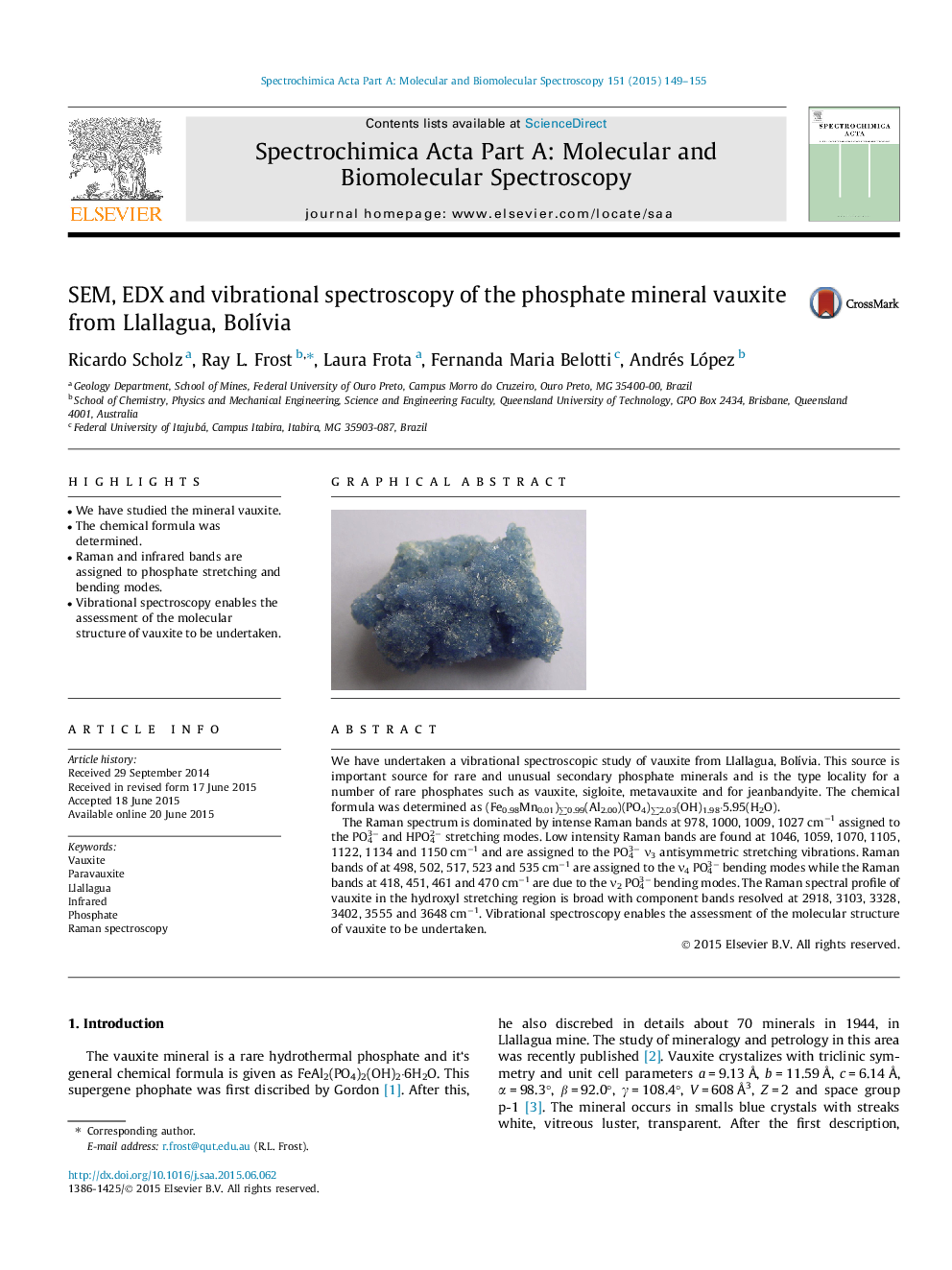| Article ID | Journal | Published Year | Pages | File Type |
|---|---|---|---|---|
| 1230065 | Spectrochimica Acta Part A: Molecular and Biomolecular Spectroscopy | 2015 | 7 Pages |
•We have studied the mineral vauxite.•The chemical formula was determined.•Raman and infrared bands are assigned to phosphate stretching and bending modes.•Vibrational spectroscopy enables the assessment of the molecular structure of vauxite to be undertaken.
We have undertaken a vibrational spectroscopic study of vauxite from Llallagua, Bolívia. This source is important source for rare and unusual secondary phosphate minerals and is the type locality for a number of rare phosphates such as vauxite, sigloite, metavauxite and for jeanbandyite. The chemical formula was determined as (Fe0.98Mn0.01)∑0.99(Al2.00)(PO4)∑2.03(OH)1.98·5.95(H2O).The Raman spectrum is dominated by intense Raman bands at 978, 1000, 1009, 1027 cm−1 assigned to the PO43− and HPO42− stretching modes. Low intensity Raman bands are found at 1046, 1059, 1070, 1105, 1122, 1134 and 1150 cm−1 and are assigned to the PO43− ν3 antisymmetric stretching vibrations. Raman bands of at 498, 502, 517, 523 and 535 cm−1 are assigned to the ν4 PO43− bending modes while the Raman bands at 418, 451, 461 and 470 cm−1 are due to the ν2 PO43− bending modes. The Raman spectral profile of vauxite in the hydroxyl stretching region is broad with component bands resolved at 2918, 3103, 3328, 3402, 3555 and 3648 cm−1. Vibrational spectroscopy enables the assessment of the molecular structure of vauxite to be undertaken.
Graphical abstractFigure optionsDownload full-size imageDownload as PowerPoint slide
